Related Research Articles

The Chindits, officially known as Long Range Penetration Groups, were special operations units of the British and Indian armies which saw action in 1943–1944 during the Burma Campaign of World War II.

The Border Security Force (BSF) is India's border guarding organisation at its borders with Pakistan and Bangladesh. It is one of the seven Central Armed Police Forces (CAPF) of India, and was raised in the wake of the Indo-Pakistani War of 1965 "for ensuring the security of the borders of India and for related matters".

The Central Reserve Police Force (CRPF) is a reserve gendarmerie and internal combat force in India under the authority of the Ministry of Home Affairs (MHA) of the Government of India. It is one among the Central Armed Police Forces. The CRPF's primary role lies in assisting the State/Union Territories in police operations to maintain law and order and counter-insurgency. It is composed of Central Reserve Police Force (Regular) and Central Reserve Police Force (Auxiliary).

The Burma campaign was a series of battles fought in the British colony of Burma. It was part of the South-East Asian theatre of World War II and primarily involved forces of the Allies against the invading forces of the Empire of Japan. Imperial Japan was supported by the Thai Phayap Army, as well as two collaborationist independence movements and armies. Nominally independent puppet states were established in the conquered areas and some territories were annexed by Thailand. In 1942 and 1943, the international Allied force in British India launched several failed offensives to retake lost territories. Fighting intensified in 1944, and British Empire forces peaked at around 1 million land and air forces. These forces were drawn primarily from British India, with British Army forces, 100,000 East and West African colonial troops, and smaller numbers of land and air forces from several other Dominions and Colonies. These additional forces allowed the Allied recapture of Burma in 1945.
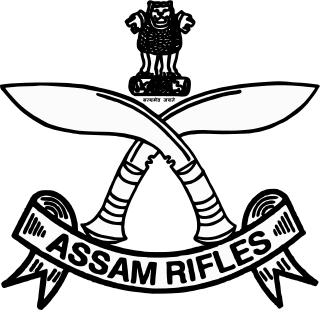
The Assam Rifles (AR) is a central paramilitary force responsible for border security, counter-insurgency, and maintaining law and order in Northeast India. Its primary duty involves guarding the Indo-Myanmar border. The AR is one of the Central Armed Police Forces (CAPF) administered by the Ministry of Home Affairs. The Indian Army maintains its operational control. As a central police force, its recruitment, perks, promotions, and retirement policies are governed by CAPF rules. Approximately 80 percent of the officers are deputed from the Army, while the remaining are drawn from the AR cadre. The AR is commanded by the Director General of the Assam Rifles, appointed by the Ministry of Home Affairs.
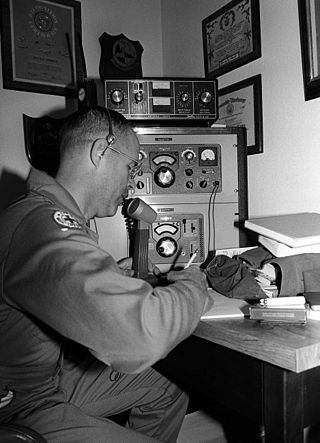
Auxiliaries are support personnel that assist the military or police but are organised differently from regular forces. Auxiliary may be military volunteers undertaking support functions or performing certain duties such as garrison troops, usually on a part-time basis. Unlike a military reserve force, an auxiliary force does not necessarily have the same degree of training or ranking structure as regular soldiers, and it may or may not be integrated into a fighting force. Some auxiliaries, however, are militias composed of former active duty military personnel and actually have better training and combat experience than their regular counterparts.
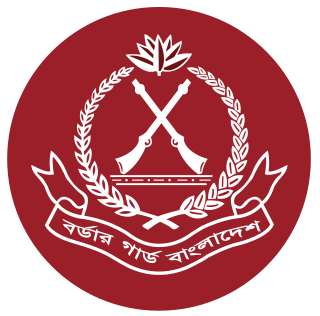
The Border Guard Bangladesh (BGB) is a paramilitary force responsible for the border security of Bangladesh. The BGB is entrusted with the responsibility to defend the 4,427 kilometres (2,751 mi) border of Bangladesh with India and Myanmar. It was formerly known as the Bangladesh Rifles (BDR).

A border guard of a country is a national security agency that performs border security. Some of the national border guard agencies also perform coast guard and rescue service duties.
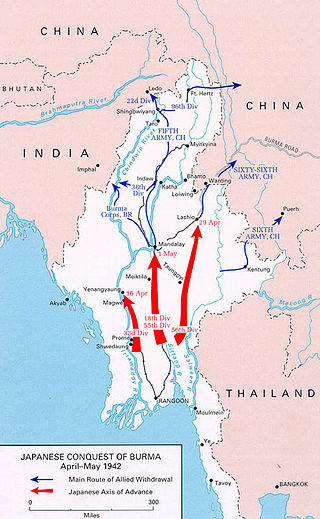
The Battle of Yenangyaung was fought in Burma, now Myanmar, from 16-19th April 1942. Part of the Burma Campaign of World War II, the battle was fought between Chinese and British allied forces on one side, and Japanese forces on the other. The battle took place in the vicinity of Yenangyaung and its oil fields.

The Myanmar Navy is the naval warfare branch of the armed forces of Myanmar. With 16,000 personnel on duty, the navy operates more than 150 vessels. Prior to 1988, the navy was small, and its role in counter-insurgency operations was smaller than those of the army and the air force. The navy has since been expanded to take on a more active role in defense of Myanmar's territorial waters.

The Indian Army, also called the British Indian Army, was involved in World War I as part of the British Empire. Over one million Indian troops served overseas, of whom 62,000 died and another 67,000 were wounded. In total at least 74,187 Indian soldiers died during the war.

Major General Thomas Wynford Rees, was a Welsh officer in the British Indian Army during the First World War, the interwar years and the Second World War
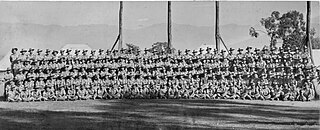
The Burma Rifles were a British colonial regiment raised in Burma. Founded in 1917 as a regiment of the British Indian Army, the regiment re-used the name of an unrelated earlier unit, the 10th Regiment Madras Infantry, which evolved into the 10th Princess Mary's Own Gurkha Rifles. After Burma was formally separated from India, the regiment was allocated to Burma. Following Burma's independence from Britain in 1948, the regiment was absorbed into the new Burmese army.

The Burma campaign in the South-East Asian Theatre of World War II took place over four years from 1942 to 1945. During the first year of the campaign, the Imperial Japanese Army with aid from Burmese insurgents had driven British forces and Chinese forces out of Burma, and occupied most of the country. From May to December 1942, most active campaigning ceased as the monsoon rains made tactical movement almost impossible in the forested and mountainous border between India and Burma, and both the Allies and Japanese faced severe logistical constraints.

The Central India Horse was a regular cavalry regiment of the British Indian Army and is presently part of the Indian Army Armoured Corps.

The Third Anglo-Burmese War, also known as the Third Burma War, took place during 7–29 November 1885, with sporadic resistance continuing into 1887. It was the final of three wars fought in the 19th century between the Burmese and the British. The war saw the loss of sovereignty of an independent Burma under the Konbaung dynasty, whose rule had already been reduced to the territory known as Upper Burma, the region of Lower Burma having been annexed by the British in 1853, as a result of the Second Anglo-Burmese War.
Lt Colonel Peter Sanders, DSO, who lost an arm policing the Indian-Afghan frontier in 1939 before winning a DSO at the Battle of Imphal in 1944 while commanding Gurkha infantry in several hard-fought battles.
The Zhob Militia is a paramilitary regiment of the Frontier Corps, a Civil Armed Force based in Baluchistan and are one of the oldest paramilitary forces in the region. The militia is under the control of the Frontier Corps and is commanded by officers seconded from Pakistan Army.
The Burma Military Police (BMP) was a paramilitary force of British Burma. Its main functions were the pacification of Upper Burma and the policing of the Burmese frontier. The force was made up of Indian and Burmese recruits.
References
- ↑ "Practice relating to Règle 4". ihl-databases.icrc.org. Retrieved 2023-05-08.
- ↑ Luscombe, Stephen; Herlihy, Jim. "Burma Frontier Constabulary: Burma Frontier Force". The British Empire website. Retrieved 7 November 2012.
- ↑ F.F.3, Burma Frontier Force